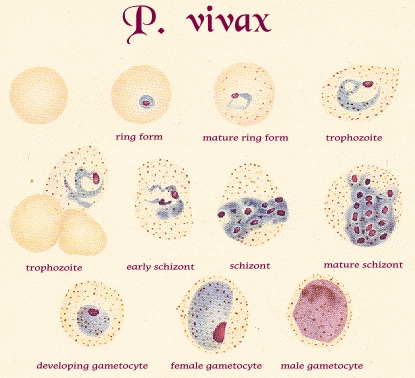In clinical studies, researchers have shown that the mahidol mutation is significant in the protection it provides against malaria. Over a 7-year period, the mutation carriers experienced a similar number of malaria cases compared to those without the mutation, but the mutation reduced the number of P.vivax parasites in their blood.

In a study published on December 11, 2009 in the prestigious journal Science, the researchers examined a mutation in the gene that codes for the enzyme G6PD. This is an important enzyme in protecting cells from oxidative damage. Mutations in this gene can cause jaundice in newborns, anemia after infection with certain pathogens and other problems such as sensitivity to drugs and pollen. Some of these mutations are very common in parts of Asia and Africa. (In Israel, the mutations in this gene can be found among all ethnicities, but among the people of Iraq and Kurdistan, the frequency is higher). There are more than 400 million people living with this disease in the world.
Scientists have suspected for a long time that there must be some advantage to these mutations and raised the possibility that they are related to protection against malaria, since the G6PD enzyme is important for red blood cells. But studies on P.falciparum in Africa did not find any such connection.
Next, the researchers turned their attention to Thailand, where P.falciparum, along with its less famous cousin P.vivax, also cause malaria. The researchers focused on a particular mutation in the G6PD gene called Mahidol (after the father of the current King of Thailand, a well-known doctor and public health promoter) that is widespread in Southeast Asia and especially in Myanmar. First, the researchers conducted a genetic study among 384 people - most of whom belong to an ethnic group called the Karen ("long-necked tribe"), in a malaria-stricken area in Thailand. Mutation frequency from breeding was 24% among these people and these additional tests because it was favored by natural selection during the last 1500 years. Scientists think that malaria spread along with agriculture, which creates small pools of stagnant water that mosquitoes love. It happened that historical studies indicate that the members of the Karen tribe left Tibet and started growing rice about 1500 years ago.
In clinical studies, researchers have shown that the mahidol mutation is significant in the protection it provides against malaria. Over a 7-year period, the mutation carriers experienced a similar number of malaria cases compared to those without the mutation, but the mutation reduced the number of P.vivax parasites in their blood. Women who carried one copy of the gene showed a 30% decrease in the number of parasites in their blood, those with two copies showed a 61% decrease. Since the G6PD gene is on the X chromosome, males can have only one copy. Men who carried this copy showed a 40% reduction in the number of parasites in their blood compared to non-carriers. The mutation had no effect on P.falciparum infection.
Until now, P.vivax has not been regarded as influencing the human genome to the same extent as P.falciparum, but the current study shows that it is a mistake to think so. Although P.vivax does not kill as quickly as its cousin and nowadays most people can afford drugs to treat it, this was not the case in the past. It is possible that the breeding mutation made it possible to extend the lives of its carriers and thus they produced more offspring and spread it among the population.

5 תגובות
If I lack g6pd am I more immune to corona?
When you were little, I was examined by 2 doctors, one Dr. Shani and the other Prof. Zelikson.
One time I ate Paul and I had headaches and dizziness...
Allergy is also a wrong definition... allergy is involved in an immune response to some substance,
In cases of G6PD the correct definition is "sensitivity"
• Disease
(n) sick, dying, unhealthy, health disorder, painful, agony, weakness, laxity, attack
Well, maybe 'disordered health' is appropriate.
But, not so much either.
"There are more than 400 million people living with this disease in the world"
As one who lacks the aforementioned enzyme
I have never heard that the phenomenon is defined within a disease but as an allergy